We hope that you enjoy this article about 5 Fabulous European Mammals. Certainly, every part of the world serves as hosts to numerous types of mammals, and that includes Europe. Herein, we have included for your appreciation our choice of just a few of those native to this continent. They represent a wide variety of types, but all remain fascinating to us. We hope that each of these 5 Fabulous European Mammals holds an equal fascination for you, as well.
Reindeer
Reindeer Facts
- The first of our choices for inclusion in this article about 5 Fabulous European Mammals is the breathtaking species known as the Reindeer.
- First of all, the well-known common name applies to a specific variety of deer with a total of 15 subspecies. All of these live as native to specific, and rather harsh, sections of the world. Further, the same awesome animal also goes by the name of caribou in parts of its native range. Indigenous People in parts of its range depend on it for their very survival.
- In addition to the simple facts of its great beauty, one very special fact sets this remarkable creature apart from all other known animals. This characteristic actually formed as a unique adaptation to the climate in which the species evolved. Quite amazingly, the beautiful reindeer remains the only known mammal to possess the ability to see in ultraviolet light.
- Though still numerous, the population of this amazing mammal unfortunately appears to be in decline. The primary reason for this seems to be climate change, much like many species around the world today. However, several other factors also threaten the magnificent animal. These include two separate parasites that threaten several local populations.
Reindeer Physical Description
The color of the fur of the Reindeer varies considerably, both in individuals and with the season. This represents yet another uncommon trait that the creature displays. The coloring generally ranges from off-white to a dark brown. Additionally, the fur sometimes develops a most striking mottled pattern.
The truly majestic animal also displays a mild degree of sexual dimorphism, much like many other mammals. That’s because, in its case, contrary to popularly held belief, both sexes develop antlers. This also sets it apart from related species, because it’s the only species whose females grow antlers.
However, the antlers of the mature female generally develop as significantly smaller than those of the males. Yet overall, the antlers of this beautiful ruminant average up to 39 in (100 cm) in length. Furthermore, they also attain an impressive average of 53 in (135 cm) in total width.
The mature males of the marvelous species grow larger than the females and average roughly 7 ft (2.13 m) in length, and weigh an average of 400 lb (182 kg). A few rare males sometimes attain a weight of as much as 700 lb (318 kg). Typically, an adult also stands an average of 59 in (150 cm) tall at the shoulder.
- Kingdom: Animalia
- Phylum: Chordata
- Class: Mammalia
- Order: Artiodactyla
- Family: Cervidae
- Genus: Rangifer
- Species: R. tarandus
Reindeer Distribution, Habitat, and Ecology
The powerful and majestic Reindeer evolved as native to the Arctic and subarctic regions of the world. However, the impressive animal also migrates within its region of habitation. This includes much of the tundra regions of the Northern Hemisphere. This range once extended much further south than it does today.
Being a large ruminant, the fascinating Reindeer primarily feeds upon a wide variety of local native plants. However, these most commonly include, reindeer moss, grasses, sedges, and the leaves of willows and birches. However, it also feeds on lichen. This makes it the only known large mammal able to consume lichen.
Unfortunately, despite its relatively large size, it in turn falls prey to a number of powerful predators. These naturally vary, depending upon the region of the world the animal inhabits. Animals such as golden eagles and wolverines often prey on the young. But, only polar bears and brown bears feed on mature individuals.
Mediterranean Monk Seal
Mediterranean Monk Seal Facts
- Next up in this compendium of 5 Fabulous European Mammals comes the astounding species known as the Mediterranean Monk Seal.
- First of all, the status of the amazing seal probably ranks as the most important fact about the species. That holds true because, according to marine biologists, fewer than 700 individuals of this ocean species remain alive today. As a result, it remains the rarest known type of seal.
- As should come as no surprise, the IUCN currently lists the wonderful animal as Endangered. This occurs due to its scant numbers and extremely limited distribution. That actually represents a small improvement in the status, since the previous listing as Critically Endangered.
- This status change reflects a recent increase in its numbers. However, that increase represented only a minimal improvement in numbers. The action also remains in keeping with the speed-of-decline criteria employed by the IUCN. However, the organization also intends to reassess its status in 2020.
- Quite fortunately, preservation efforts have been instituted by the various governments in whose waters it makes its home. But, most unfortunately, these efforts continue to be hampered by various factors. These multiple factors include such things as high infant mortality rates and being caught in fishing nets.
Mediterranean Monk Seal Physical Description
The beautiful Mediterranean Monk Seal ranks as rather average for a pinniped, in terms of sheer size. Sexual Dimorphism does exist in the species, but only to a very small degree. Males attain an average weight of about 710 lb (320 kg). Meanwhile, the smaller females average roughly 660 lb (300 kg).
But, the genders remain roughly equal in terms of length, however. Adults of both sexes reach an average length of 7.9 ft (2.4 m). These also display a gender-based difference in regards to coloring. Males typically display a primarily black color. Females, however, usually remain dark gray or brown.
In addition, both genders of the species display a pale underside. Yet, this typically presents as gray for females and white for males. Also, the fur of the creature ranks as the shortest of any known pinniped, regardless of gender. The snout grows broad and flat, while the flippers grow relatively short.
- Kingdom: Animalia
- Phylum: Chordata
- Class: Mammalia
- Order: Carnivora
- Suborder: Pinnipedia
- Family: Phocidae
- Genus: Monachus
- Species: M. monachus
Mediterranean Monk Seal Distribution, Habitat, and Ecology
Perhaps most notably of all, the lovable Mediterranean Monk Seal has an extremely limited and fragmented distribution. That holds true due to the fact that its only confirmed populations consist of three small colonies. Scientists currently suspect a fourth to exist, but it has not been confirmed.
The known populations exist in the Aegean Sea, near Greece, one near Turkey, and one near Cabo Blanco, close to Africa. The population near Greece, which also ranks as the largest, now calls the Alonissos Marine Park home. This provides at least part of the species with more protection.
This diurnal species also appears to feed primarily on a variety of fish and mollusks. This primarily includes squid and octopuses. It generally feeds near the surface but has been seen as deep as 500 ft (152.4 m). For the moment, marine biologists know very little about its reproductive practices.
Furthermore, there appears to be no set breeding season for this fascinating mammal. Bu, the majority of recorded births occur in the months of October and November. Finally, when not in the water, individual specimens prefer to inhabit sea caves, and occasionally appear on local beaches.
Iberian Lynx
Iberian Lynx Facts
- The third of these selections for inclusion in this article about 5 Fabulous European Mammals is the Iberian Lynx.
- This lynx constitutes a truly beautiful species of wildcat currently only found in a small section of western Europe. In addition, the IUCN presently lists this beautiful animal as Endangered, on its Red List of Endangered Species. Currently, the primary threats to its existence include habitat loss and a significant reduction of its natural prey.
- Quite unfortunately, the gorgeous mammal now faces a unique threat to its continued existence. This occurs due to the fact that two separate diseases have significantly reduced the amount of available prey for the gorgeous wild feline. However, concerted efforts by associations such as the EU LIFE-Nature project currently remain underway.
- For the moment, these ongoing rescue efforts include captive breeding and reintroduction programs. Partly due to these awesome efforts, its known numbers in the wild have risen. But quite lamentably, its known population remains at only 309 individuals. Finally, it also now faces the threat of climate change, much like many other species around the world.
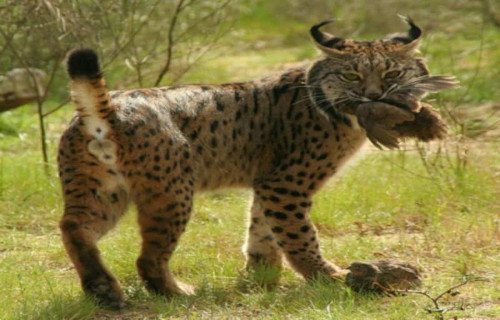
Iberian Lynx Physical Description
First of all, the Iberian Lynx attains an average head and body length of roughly 43 in (110 cm). The tail stays relatively short in comparison with other species of wildcat. Individuals also average about 12 in (30 cm) in length.
This particular variety of lynx also displays a moderate degree of sexual dimorphism, much like many of the related species. Though the lengths remain similar between the genders, the male develops significantly stockier in its build.
Furthermore, the male averages nearly 28 lb (13 kg), while the female averages around 21 lb (9.4 kg) in weight. The legs of the Iberian Lynx grow relatively long. Like other species of lynx, the ears on this impressive have a prominent tuft.
This mammal also presents a magnificent color scheme, making it impossible to confuse with others. The coloring generally appears tawny, with dark spots of varying sizes. The muzzles appear slightly more elongated in shape than most varieties of wildcats.
- Kingdom: Animalia
- Phylum: Chordata
- Class: Mammalia
- Order: Carnivora
- Family: Felidae
- Genus: Otocolobus
- Species: O. manul
Iberian Lynx Distribution and Habitat
Fossil evidence also indicates that the Iberian Lynx has never had a significant endemic range. It once inhabited a range that encompassed a region that included portions of what is now France, Portugal, and Spain.
Currently, the Iberian Lynx is only known to exist in two areas in Andalucia, Spain. Only two known breeding populations remain. Much of what previously constituted its natural habitat range has now been taken for the construction of roads and dams.
The Iberian Lynx generally prefers to inhabit regions of rather open grassland mixed with areas of dense shrubbery. Presently, its known population is restricted to areas of maquis shrubland, lowland forests, and mountain areas.
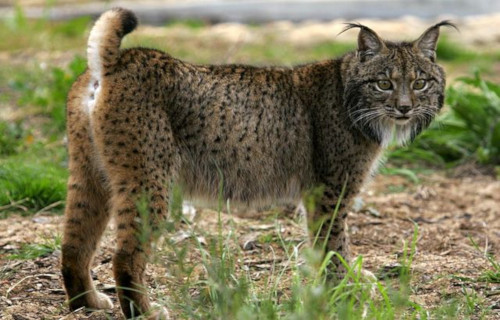
CCL: https://bit.ly/37QLH8B
Iberian Lynx Ecology
The Iberian Lynx possesses a highly specialized diet, consisting chiefly of rabbits. Being rather smaller than most species of lynx, it remains incapable of attacking larger prey. A male consumes an average of one rabbit per day, while a female with kittens consumes an average of three per day.
This animal also evolved to be rather solitary in nature, as a general principle. The exception to this occurs when mating, obviously. Individuals roam over great distances searching for food, especially with the reduction of local populations of natural prey.
It exhibits a rather high degree of territorial behavior, except for females during mating season. Litters typically consist of 2-3 kittens. For reasons which remain undetermined, young offspring also become violent towards each other between 30-60 days after birth, making infant mortality rates high. The average lifespan of the Iberian Lynx in the wild is 13 years.
Flemish Giant Rabbit

CCL: https://bit.ly/2tR0vFM
Flemish Giant Rabbit Facts
- The next of our choices for listing among these 5 Fabulous European Mammals is one whose name truly says it all, the Flemish Giant Rabbit.
- Most notably, this astounding variety of rabbit currently holds the popular title of the King of Rabbits. Many individuals assign this unofficial title to the creature because it reigns supreme as the largest species of rabbit presently known to man. Furthermore, these very docile giants have also been bred since the early 16th century, chiefly for their size.
- Today, however, the majority of people primarily breed the animal as a pet and show animal. For the record, the latter of these two we consider to be quite an unfortunate practice. Some people also refer to the remarkable animal popularly as the Gentle Giant. The use of this term occurs due to its extreme docility, even compared to related species.
- Additionally, the possibility also exists that this fascinating species descended from the now extinct Patagonian rabbit. However, some scientists consider the evidence for this to currently be insufficient. But, regardless of its own origins, the Flemish Giant Rabbit actually represents the ancestor of many of the breeds of domestic rabbits popular today.
Flemish Giant Rabbit Physical Description
First of all , the incredible Flemish Giant Rabbit attains a truly giant size for a rabbit. That’s because the fabulous mammal attains a typical weight of about 15 lb (6.8 kg). Yet, exceptional individuals of this particularly impressive species occasionally reach weights totaling as much as an astonishing 22 lb (10 kg).
Secondly, the species does display slight degree of sexual dimorphism, much like most other related species. In its case, females typically attain a slightly greater weight than the males. The same females also usually reach a greater overall body length than the somewhat smaller males, as well.
In addition, the incredibly soft, luxurious fur of the animal may develop as any of seven color varieties. However, regardless of color, the fur itself typically appears rather glossy and quite dense. Meanwhile, the body remains elongated and the hindquarters develop relatively broad for a rabbit.
Further, the heads of the genders also display yet another form of gender-based physical variation. That’s because the heads of the two sexes have a decidedly different shape. As a result, the head of the male develops as much broader and larger than that of the female. Her head remains more streamlined in shape.
- Kingdom: Animalia
- Phylum: Chordata
- Class: Mammalia
- Order: Lagomorphs
- Family: Leporids
- Genus: Oryctolagus

CCL: http://bit.ly/2QZT99x
Flemish Giant Rabbit Distribution, Habitat, and Ecology
Being a domestic breed, the the wonderfully lovely Flemish Giant Rabbit actually has no natural distribution. But, humans first bred its earliest descendants in Belgium, in Europe. The development of the breed originally occurred to create a convenient source of both fur and meat.
As with other types of rabbits, the surprising species feeds entirely as a herbivore. Quite understandably, the animal primarily consumes a rather wide variety of vegetables and fruits. It also displays a definite fondness for hay.
However, the comparatively massive animal does require a higher protein content than other rabbits. Quite surprisingly, it also remains even more tolerant of human handling than other rabbits. But, it’s not very tolerant of excessive heat.
Finally, this animal commonly reaches breeding age about 5 months after birth. Typically, litter size varies from between 5-12 young, for most females. This enormous and remarkable breed of rabbit also lives longer than most Leporidae, with a typical life expectancy of between 8-10 years.
Scottish Wildcat
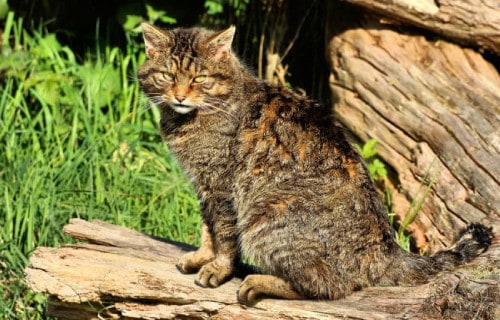
CCL: https://bit.ly/1jxQJMa
Scottish Wildcat Facts
- The fifth and final entry into this article about 5 Fabulous European Mammals, the Scottish Wildcat, places there only due to random selection.
- First of all, the rather surprising Scottish Wildcat holds a very specific claim to fame, in a manner of speaking. That’s because it represents a variety of wild feline that virtually no one outside of its endemic range knows exists. That’s partly due to the fact that it strongly resembles a domestic feline.
- Furthermore, this rather adorable wildcat itself actually constitutes a subspecies of another variety of wild feline. That parent species is the equally little-known European wildcat. However, that species possesses a larger natural habitat range than the Scottish Wildcat.
- Sadly, like many related species, this animal also faces serious threats to its continued existence. Perhaps the most pressing is its extremely limited population. That’s because, at present, estimates place the total population of the animal at no more than 300 individuals, perhaps fewer.
- But it also faces other serious threats. Ranking high on this list is climate change and habitat loss, like many other species throughout the world today. Yet, the species also faces the added threat of interbreeding with domestic felines, given its small physical size.
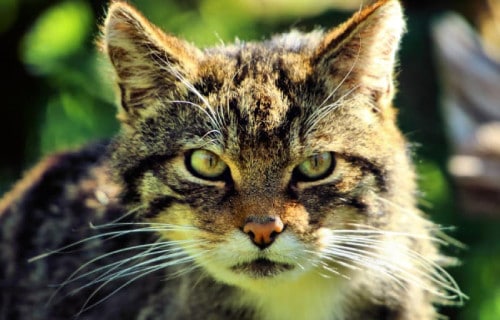
CCL: https://bit.ly/1jxQJMa
Scottish Wildcat Physical Description
Perhaps most notably, the Scottish Wildcat has a rather striking appearance, to be certain. Nonetheless, it ranks as a rather small species of wild feline, compared to others. Like many animals, it also displays a moderate degree of sexual dimorphism. In its case, physical size represents the most obvious example of the principle.
Firstly, adult males of this mammal only attain an average weight of about 16 lb (7.2 kg). Meanwhile, the significantly smaller females only average a weight of about 10.3 lb (4.7 kg). Additionally, females of this fascinating wildcat generally develop slightly smaller skulls than males, in relation to body size.
But its physical size isn’t the only reason it can be confused with a domestic cat. It also bears a striking resemblance in terms of coloring. The coats have a tabby-like patterning, very similar to many domestic cats. However, it lacks the the white feet common domestic tabbies.
In addition, the tail grows comparatively thick, with a prevalent ringed pattern. But it does possess one decidedly unusual physical attribute. Uniquely, and rather interestingly, the ears of this feline have the ability to rotate a full 180 degrees. This provides a decided advantage in its native environment.
- Kingdom: Animalia
- Phylum: Chordata
- Class: Mammalia
- Order: Carnivora
- Family: Felidae
- Genus: Felis
- Species: F. silvestris
- Subspecies: F. s. grampia
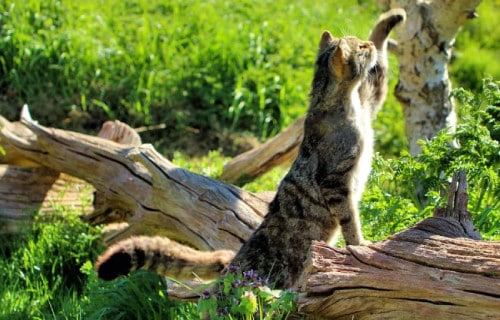
CCL: https://bit.ly/1jxQJMa
Scottish Wildcat Distribution, Habitat, and Ecology
The endemic range of the Scottish Wildcat once included much of what now constitutes Wales and England. Yet sadly for the world, that no longer holds true. Currently, its habitat range only covers portions of Scotland, in Europe, hence the common name. It became extinct in the other portions of its range in the last 150 years, primarily due to human activity.
In point of fact its preferred habitat consists principally of areas consisting of shrubland and woodland. However, the ongoing disappearance of such regions occasionally forces it to also encroach upon human population centers. Unfortunately, this proximity often leads to interbreeding with domestic cats.
Further, experts estimate its lifespan in the wild to be only 2-3 years, due to the hazards it faces. In the wild, individuals frequently fall prey to diseases contracted from feral cats. It also frequently perishes from encounters with vehicles. Yet, the beautiful animal often lives for as long as 15 years in captivity.
This rather gorgeous mammal generally lives in a small den that it places in convenient locations. These it usually constructs beneath tree roots, or in brush piles or cairns. Litter size may be as many as 8 kittens, but averages slightly more than two. The kittens typically leave their mother at around 6 months of age.
Its activity may be either nocturnal or crepuscular, although nocturnal activity predominates. At these times, it hunts small prey, usually including rabbits, mice, and voles. Any uneaten kill it conceals, to be finished later. Finally, individual territories, which it marks with scent, typically remain relatively small.
5 Fabulous European Mammals
We certainly hope that you have enjoyed this article about 5 Fabulous European Mammals. Beautiful and majestic species such as these always fascinate us. Nature has blessed this world with so much natural beauty, that it is only right that we appreciate it. However, many species need our help and protection, now more than ever. Let us do all that we can to protect and preserve them for their benefit and our own.
Check out our other articles on 5 Rare Mind-Blowing Cloud Types, Earth’s Many Astounding Beetles, Spectacular Dolphins Throughout Our World, 5 Natural Marvels of Iceland
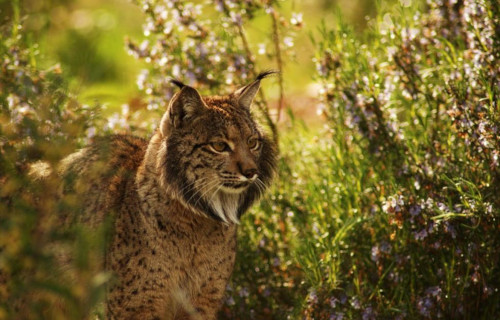
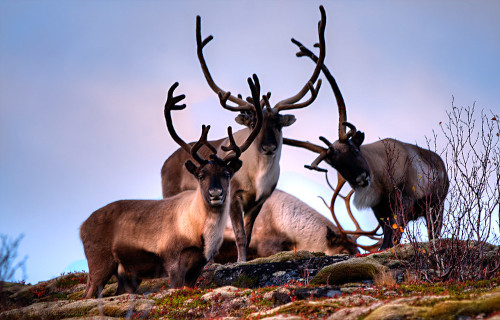
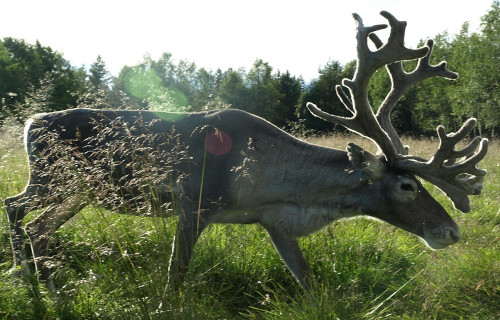
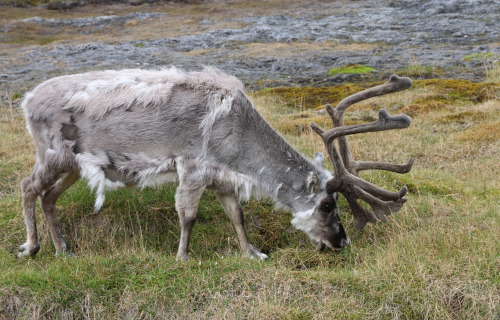
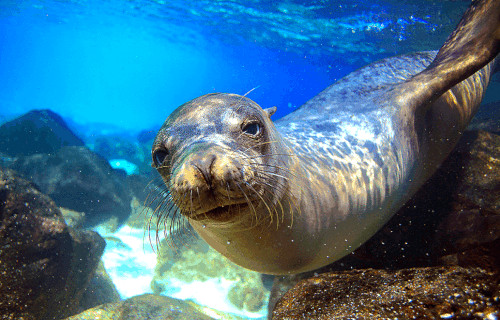
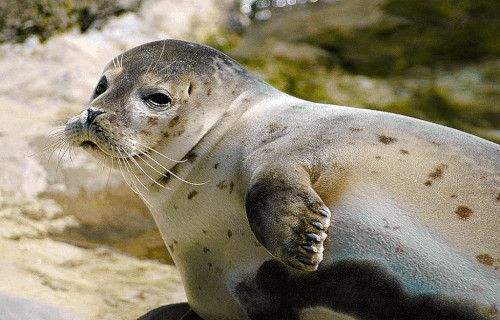











Leave a Reply